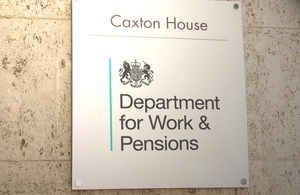
Details of new auto-enrolment review revealed

The DWP has announced it will look to plug the gaps in automatic enrolment to help those with multiple low-income jobs.
A review of automatic enrolment was signalled today to encourage more people to save into a workplace pension.
The review will gather evidence on groups such as people with multiple jobs who do not qualify for automatic enrolment in any single job. It will also consider how the growing numbers of self-employed people can be helped to save for their retirement.
Kate Smith, head of pensions at Aegon, said: “We welcome the Pensions Minister’s announcement that the 2017 review of auto-enrolment will look to plug the gaps by extending pension savings to those with multiple low-income jobs, each of which pays below the £10,000 annual threshold for auto-enrolment.
“It’s also important that pension policy is future fit and finds solutions that work for the growing number of self-employed and gig-economy workers who are not currently benefitting from auto-enrolment."
She called for the review to address a “current injustice which means some schemes don’t claim tax relief for low earners who do not pay income tax”.
She said: “With the starting point for paying income tax rising to £11,500 (2017/18), and the auto-enrolment salary trigger staying at £10,000, there will be a greater number of individuals who are auto-enrolled that don’t pay income tax. This makes it imperative that all schemes move to a ‘relief at source’ basis so low earners get the Government boost they are entitled to.”
The DWP said automatic enrolment had led to almost 7 million people being enrolled into a pension by 300,000 employers. This is expected to lead to around 10 million people newly saving or saving more by 2018, generating around £17 billion a year more in workplace pension saving by 2019/20.
Secretary of State for Work and Pensions, Damian Green said: “Pensioner poverty has more than halved since the late 1980s, which is a record to be proud of. We need to secure this legacy for future generations.”
New research out today highlights that nearly £82 billion was saved into pensions last year, of which almost 60% was contributed by employers.
The estimated average amount of contributions for workers of medium or large firms has increased to 8% of employee earnings, 4 times higher than the current minimum contribution rate.
The DWP also revealed its decision to freeze the automatic enrolment trigger at £10,000 for the 2017/18 tax year. Any eligible workers who earn this amount or more will continue to be automatically enrolled.
Ms Smith said: “Freezing the annual salary threshold at £10,000 for another year should bring more people into pension saving, but with salaries flat-lining, we may need to consider going further.”
She said: “Auto-enrolment contributions are set to rise by 2019 to 8% of a band of earnings between £5,876 and £45,000, but that won’t be enough to give most people an adequate income in retirement. One simple way to increase contributions would be to gradually move to a position where the 8% is on all earnings with no initial earnings excluded.”
Joanne Segars, chief executive of the Pensions and Lifetime Savings Association, said: “With more than two years to go until automatic enrolment is fully rolled out though we need to focus on the immediate jobs in hand: bringing hundreds of thousands of small employers and millions more savers into workplace pensions, and making sure op-out rates don’t increase as contribution rates rise to 8%.”
She wants an independent commission to be set up to advise on how and when to increase contributions in future.
